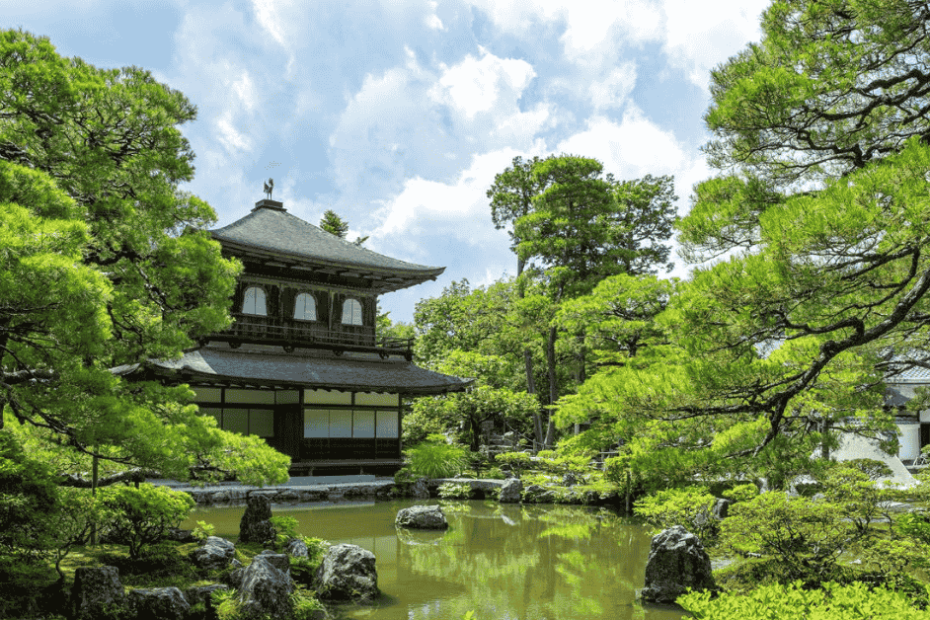Kyoto, Japan’s cultural heart, offers a mesmerizing blend of ancient temples, serene gardens, and vibrant markets. If you’ve only got three days to explore this enchanting city, don’t worry—I’ve crafted the perfect itinerary to make the most of your visit. From the iconic Fushimi Inari Shrine to the tranquil Arashiyama Bamboo Grove, you’ll experience the essence of Kyoto.
Whether you’re a history buff, a foodie, or just someone looking to soak up some stunning scenery, this guide will help you navigate Kyoto’s must-see spots. Trust me, every moment will be unforgettable.
Key Takeaways
- Explore Kyoto’s rich cultural heritage within three days, visiting iconic landmarks like Kiyomizu-dera Temple, Fushimi Inari Shrine, and Kinkaku-ji (Golden Pavilion).
- Day 1 focuses on Eastern Kyoto, including visits to Kiyomizu-dera Temple, the Higashiyama District, and enjoying the traditional ambiance of Gion and Pontocho.
- Day 2 highlights Northern Kyoto, featuring the stunning Golden Pavilion, the serene Arashiyama Bamboo Grove, and vibrant dining options in Downtown Kyoto.
- Day 3 covers Southern Kyoto, starting with the famous Fushimi Inari Taisha Shrine, exploring the tranquil Tofukuji Temple, and wrapping up at Kyoto Station with its dining and shopping options.
- Effective transportation options include buses, trains, bicycles, and walking, ensuring easy navigation of Kyoto’s attractions.
- Optimal visiting times are during cherry blossom season in Spring, picturesque Autumn, or off-peak Winter months for a quieter experience.
Day 1: Exploring Eastern Kyoto
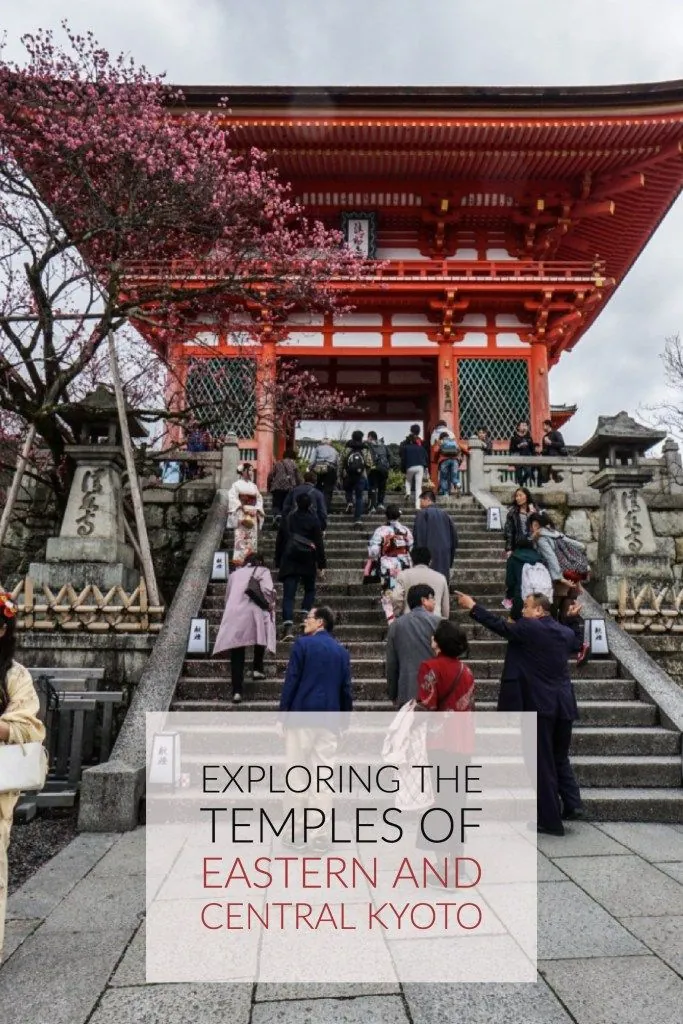
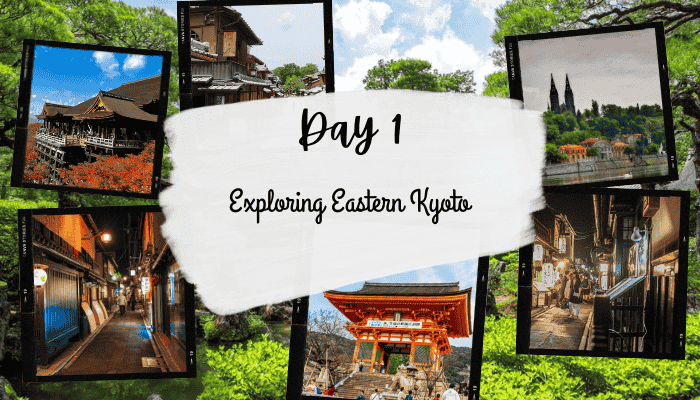
Morning: Visiting Kiyomizu-dera Temple
On the first morning in Kyoto, I started with the Kiyomizu-dera Temple. This UNESCO World Heritage site is one of Kyoto’s prominent landmarks. Kiyomizu-dera is famed for its wooden stage that juts out over the hillside, giving panoramic views of the cityscape.
Arriving early helped me avoid larger tourist crowds. As I walked up to the temple, the path itself was lined with various shops and eateries. I took my time exploring these before reaching the main entrance.
Inside the temple, I learned about the significance of Kiyomizu-dera, which dates back to 778 AD. The Otowa Waterfall at the base has three channels, and drinking from them supposedly grants health, longevity, or academic success.
Afternoon: Strolling Through Higashiyama District
Post temple visit, I headed to the Higashiyama District. This area, known for its scenic and traditional atmosphere, was like stepping back in time. The narrow lanes were lined with wooden buildings, many of which are centuries old.
I took my time meandering through the streets, peeking into various shops selling local crafts, ceramics, and sweets. The district was particularly picturesque and felt authentic, especially with fewer crowds after lunchtime.
Higashiyama is especially beautiful during cherry blossom season. Though it was busy, the sight of blooming trees in front of traditional wooden houses was mesmerizing.
Evening: Enjoying Gion and Pontocho
In the evening, I explored Gion, Kyoto’s historic district renowned for its geisha culture. Gion’s streets, lined with traditional tea houses and lanterns, exuded a timeless charm. I saw a few geishas hurrying to their appointments in the twilight.
I then walked to Pontocho, a narrow alley parallel to the Kamogawa River. This alley is famous for its mix of high-end and affordable dining options housed in traditional wooden establishments. Enjoying a meal here, with flickering lanterns and the distant sound of flowing water, felt quintessentially Japanese.
These experiences on the first day offered a rich blend of culture, history, and cuisine, setting a memorable tone for the rest of the Kyoto itinerary.
Day 2: Northern Kyoto Highlights

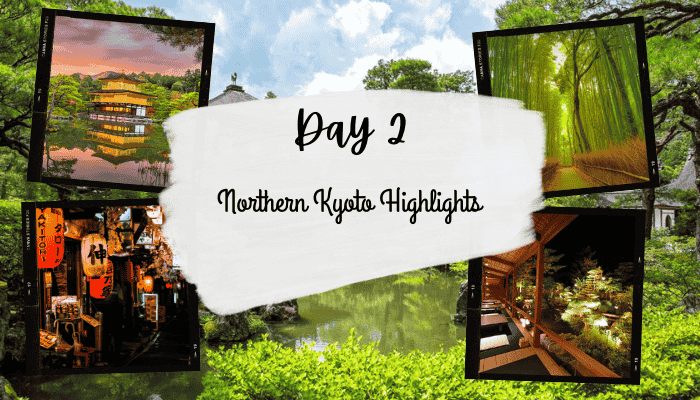
Day 2 in Kyoto promises discoveries of historical sites and nature’s beauty, culminating in a delightful dining experience.
Morning: Discovering Kinkaku-ji (Golden Pavilion)
I started the day at Kinkaku-ji Temple, famously known as the Golden Pavilion. This stunning temple is a must-see with its gleaming gold exterior reflecting in the serene pond below. As I strolled through the meticulously manicured grounds, I found the cherry blossom season made the visit even more enchanting. Kinkaku-ji, originally built in 1397, remains a symbol of Kyoto’s cultural heritage. The temple is open daily from 9 AM to 5 PM, and entry costs ¥400 ($3.60).
Afternoon: A Walk Through Arashiyama Bamboo Grove
After my visit to Kinkaku-ji, I headed to Arashiyama Bamboo Forest. This picturesque bamboo grove offers a tranquil escape from the city’s hustle and bustle. As I walked along the well-maintained paths, the towering bamboo stalks created a serene, almost otherworldly atmosphere. Arashiyama is not just about bamboo; it also features the scenic Togetsukyo Bridge and the charming Tenryu-ji Temple. The area is best explored on foot, although bicycle rentals are available for those looking to cover more ground quickly.
Evening: Dining in Downtown Kyoto
I wrapped up the day in Downtown Kyoto, a vibrant area teeming with dining options. From traditional Japanese sushi and ramen to international cuisines, the variety ensured I found something to satisfy my palate. I chose a cozy izakaya, where I indulged in an array of small dishes paired with sake. Downtown Kyoto’s atmosphere, lively yet inviting, made for a perfect end to my day of exploration and relaxation.
Day 3: Southern Kyoto and Fushimi Inari
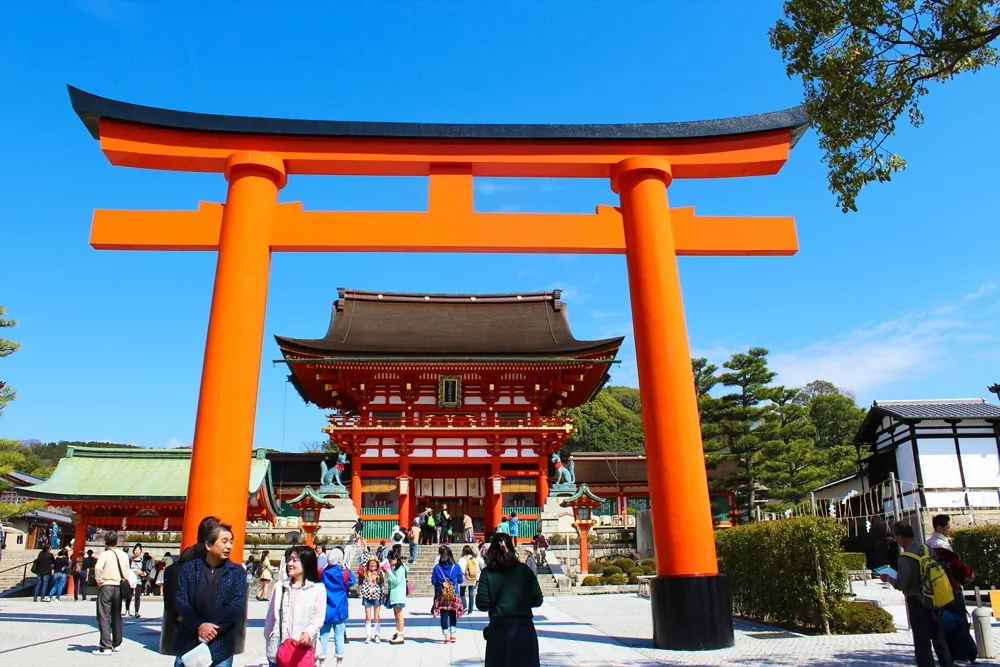
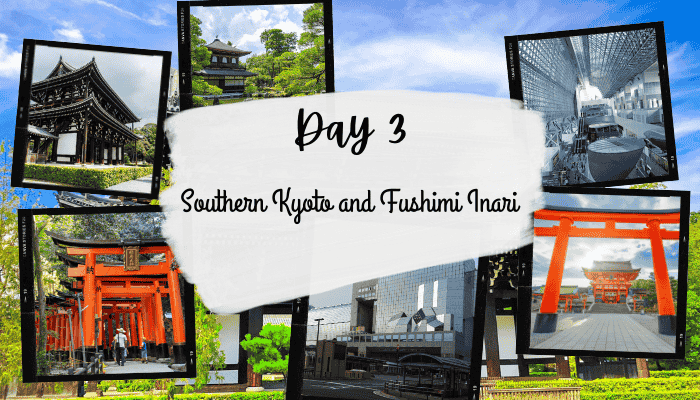
Day 3 in Kyoto includes visits to the famous Fushimi Inari Taisha Shrine, Tofukuji Temple, and wrapping up at Kyoto Station. This itinerary promises an enriching and memorable experience.
Morning: Fushimi Inari Taisha Shrine
Fushimi Inari Taisha Shrine is my first stop. It’s renowned for its thousands of red Torii gates that create a path up the mountain. This Shinto shrine, dedicated to the deity of good harvest and business success, is best visited early to avoid crowds. Arriving by 8 am or earlier allows quiet contemplation and an opportunity to capture stunning photos without obstruction. The shrine remains open 24/7, so consider a late afternoon visit if you prefer fewer crowds post-tour bus departures. The serene atmosphere and unique architecture make this shrine a must-see.
Afternoon: Exploring Tofukuji Temple
After an enriching morning, I head to Tofukuji Temple in the afternoon. Known for its beautiful gardens and traditional Japanese architecture, Tofukuji offers a peaceful retreat. Walking through its meticulously designed gardens, I appreciate the harmony between natural elements and architectural styles. The temple complex includes several notable points, like the Tsutenkyo Bridge, which provides stunning views of the surrounding foliage. Visiting Tofukuji Temple after Fushimi Inari Shrine offers a balanced experience of Kyoto’s spiritual and aesthetic heritage.
Evening: Wrapping Up at Kyoto Station
My final stop for the day is Kyoto Station. After exploring temples and shrines, the bustling station provides a different slice of Kyoto life. Within the station, there are multiple shopping options and dining establishments to explore. I make a point to visit some of the station’s unique shops and food courts, savoring local delicacies. The station’s architectural design itself is impressive, combining modern elements with traditional touches. Wrapping up here serves as a fitting end to my day, offering both convenience and a comprehensive taste of Kyoto’s culture.
Travel Tips for Kyoto
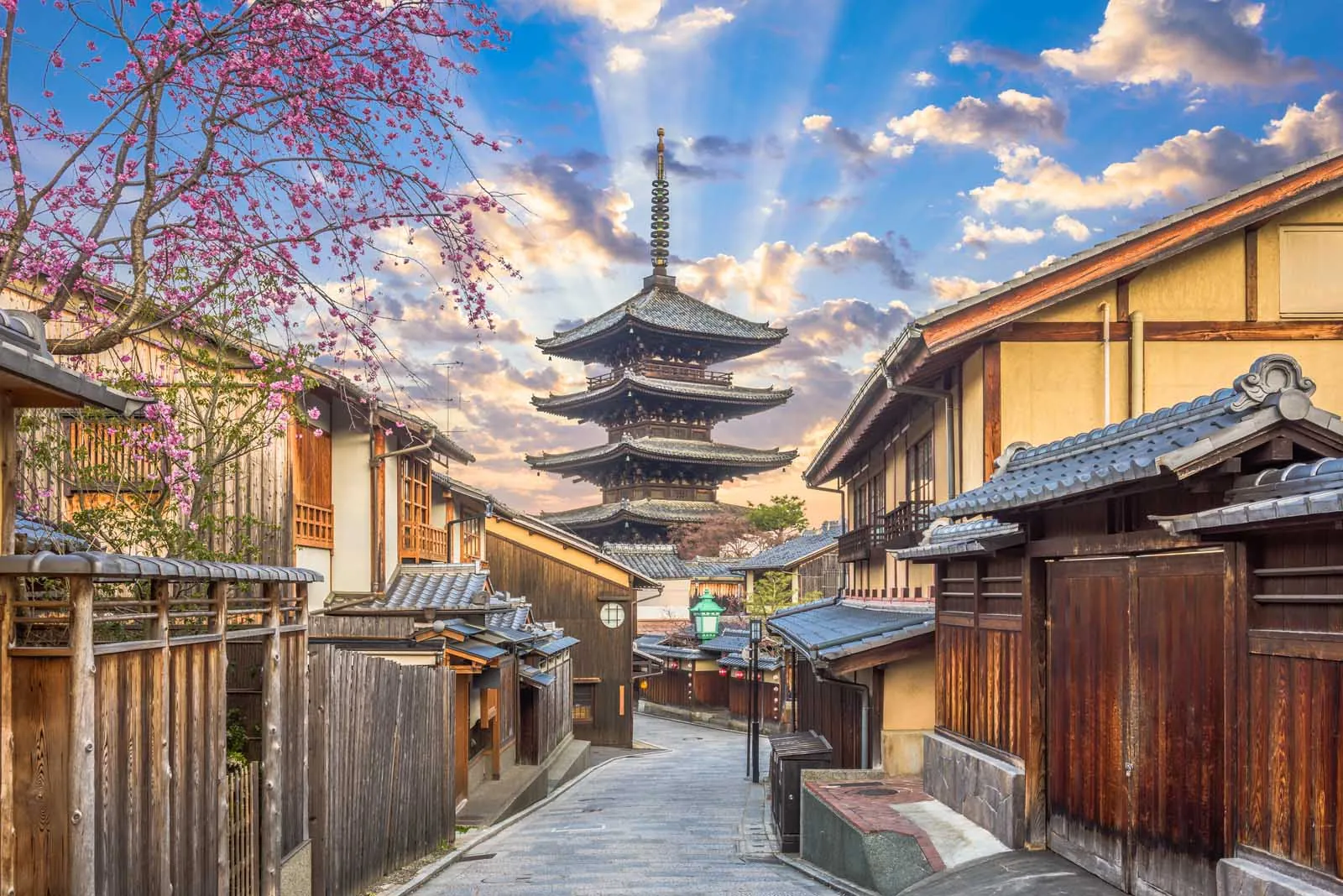
Getting Around the City
Effective transportation enhances any Kyoto visit. The city offers several options to navigate its charming streets and historic sites. Buses, trains, and bicycles each present unique advantages.
- Buses: Kyoto’s bus network efficiently covers most touristic areas. I recommend the Kyoto City Bus All-day Pass (¥600) for unlimited travel within the city for one day.
- Trains: The JR Sagano Line provides quick access to Arashiyama. Use Kyoto’s Subway Karasuma Line to connect major spots.
- Bicycles: The city’s flat terrain suits cycling well. Rent a bike from outlets like Kyoto Cycling Tour Project, averaging ¥1,500 per day, to explore narrow lanes and scenic paths.
- Walking: Many sites are close together, making walking a practical option. I use Google Maps offline for easy navigation.
Best Time to Visit
Kyoto’s weather varies, influencing the best times to explore.
- Spring (March to May): Cherry blossoms peak in April. Expect mild temperatures (50-70°F).
- Summer (June to August): Though hot and humid (75-90°F), the Gion Matsuri in July makes summer memorable.
- Autumn (September to November): Enjoy picturesque foliage. October offers comfortable weather (60-75°F).
- Winter (December to February): Winters are cold (30-45°F). If crowds are less desirable, this off-peak season offers quieter exploration.
Planning ahead and timing your visit with Kyoto’s seasonal highlights enhances the experience. The bustling festivals and stunning natural scenery ensure an unforgettable trip.
Conclusion
Kyoto’s rich cultural heritage and stunning natural beauty make it a must-visit destination. From the iconic Fushimi Inari Shrine to the serene Arashiyama Bamboo Grove there’s something for everyone. With convenient transportation options and well-timed visits you can fully immerse yourself in the charm of this historic city. Whether you’re captivated by cherry blossoms in spring or the vibrant foliage in autumn planning your trip around Kyoto’s seasonal highlights will ensure an unforgettable experience. So pack your bags and get ready to explore the wonders of Kyoto!
Frequently Asked Questions
What are the must-see cultural sites in Kyoto?
Kyoto boasts iconic cultural sites like Fushimi Inari Shrine, Kinkaku-ji (Golden Pavilion), Arashiyama Bamboo Grove, and Kiyomizu-dera Temple. These locations offer a glimpse into Japan’s rich history and traditions.
What is the best way to get around Kyoto?
Kyoto’s transportation system includes efficient buses, trains, and rentable bicycles. The Kyoto City Bus & Subway Pass is highly recommended for tourists to conveniently explore different parts of the city.
When is the best time to visit Kyoto?
Spring (March to May) and Autumn (September to November) are ideal times to visit Kyoto due to the cherry blossoms and vibrant autumn foliage. These seasons offer the most scenic views and pleasant weather.
How many days do I need to fully explore Kyoto?
A three-day itinerary is sufficient to cover Kyoto’s major attractions. This timeframe allows for a relaxed exploration of key cultural sites without feeling rushed.
Are there any festivals in Kyoto worth attending?
Kyoto hosts several notable festivals, including the Gion Matsuri in July and the Jidai Matsuri in October. Timing your visit to coincide with these events can provide a unique cultural experience.
Can I explore Kyoto on a budget?
Absolutely! Kyoto offers many budget-friendly options such as free temple visits, affordable street food, and reasonably priced public transportation passes. Planning and local recommendations can help manage costs effectively.
Is Kyoto bike-friendly?
Yes, Kyoto is quite bike-friendly with many rental shops and dedicated bike paths. Biking is a great way to explore less crowded paths and scenic routes, offering a unique perspective of the city.
What should I pack for a trip to Kyoto?
Pack comfortable walking shoes, lightweight clothing for summer or warm layers for winter, and an umbrella or raincoat. If visiting during spring or autumn, consider layering outfits to adjust to temperature changes.
How can I make the most of the cherry blossom season in Kyoto?
Planning ahead and visiting popular spots like Maruyama Park, the Philosopher’s Path, and Heian Shrine early in the morning can help you enjoy the cherry blossoms while avoiding large crowds.

